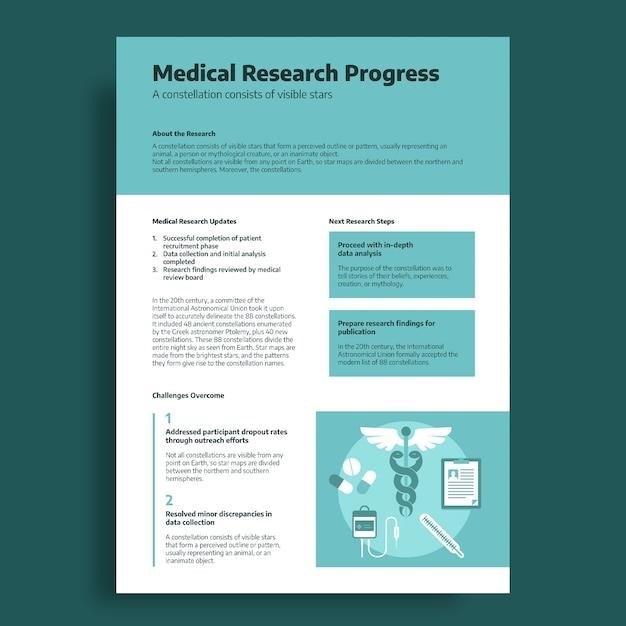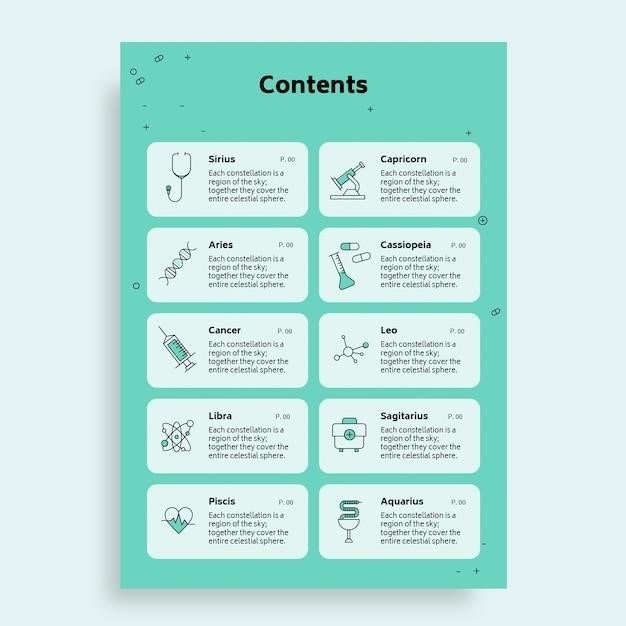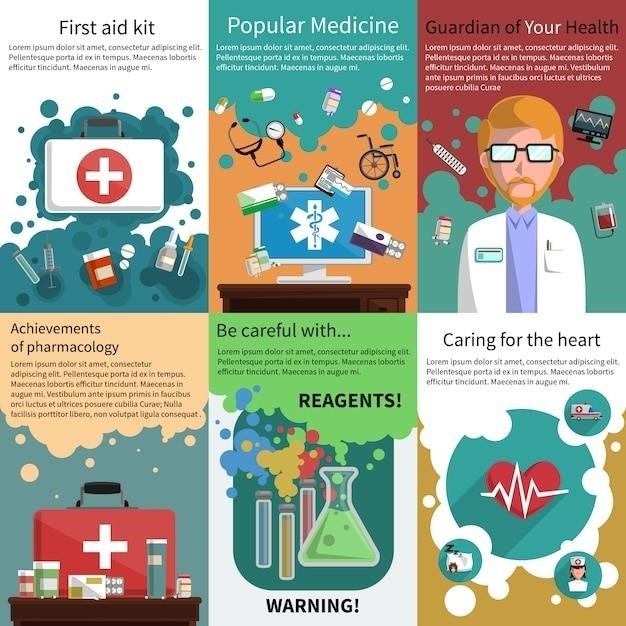
nursing pharmacology study guide pdf
Nursing Pharmacology Study Guides⁚ Key Resources
Numerous pharmacology study guides exist in PDF format‚ offering varying approaches to learning․ These resources often align with popular nursing textbooks‚ such as McCuistion’s or Clayton’s‚ providing supplemental exercises and NCLEX-style questions․ Some guides focus on dosage calculations‚ while others offer comprehensive reviews of drug classes and mechanisms of action․ Free and paid options are readily available online․
Available Study Guides and Textbooks
The market offers a diverse range of nursing pharmacology study guides in PDF format‚ catering to various learning styles and exam preparation needs․ Many are designed to complement specific textbooks‚ like the popular “McCuistion’s Pharmacology⁚ A Patient-Centered Nursing Process Approach” or “Clayton’s Basic Pharmacology for Nurses‚” offering chapter-by-chapter reinforcement and practice exercises․ These supplementary materials often include case studies‚ NCLEX-style questions (multiple choice‚ fill-in-the-blank‚ ordered response)‚ and other interactive elements to enhance comprehension and retention․ Independent study guides also exist‚ providing a comprehensive overview of pharmacology principles and common drug classes‚ often incorporating practical application scenarios and clinical considerations․ Some resources focus specifically on dosage calculations‚ offering practice problems and strategies for mastering this crucial skill․ The availability of both free and paid options allows students to choose resources that best fit their budget and learning preferences․ Remember to check reviews and compare content before selecting a study guide to ensure it aligns with your curriculum and learning objectives․
Popular Pharmacology Textbooks for Nursing Students
Several widely-used pharmacology textbooks serve as foundational resources for nursing students‚ often complemented by accompanying study guides available in PDF format․ These texts typically present comprehensive coverage of drug classifications‚ mechanisms of action‚ pharmacokinetics‚ pharmacodynamics‚ and nursing implications․ “McCuistion’s Pharmacology⁚ A Patient-Centered Nursing Process Approach” is a frequently cited example‚ known for its clear explanations and clinical focus․ Similarly‚ “Clayton’s Basic Pharmacology for Nurses” provides a solid foundation in pharmacology principles․ These books often incorporate case studies‚ illustrations‚ and practice questions to facilitate learning․ The choice of textbook often depends on the specific nursing program’s curriculum‚ but many share a common goal⁚ to equip students with the essential knowledge and skills to safely and effectively administer medications․ Remember to check your school’s required reading list to ensure compatibility with your course material; Beyond these key texts‚ other reputable publishers offer comprehensive pharmacology textbooks‚ each with its unique strengths and pedagogical approaches․ Consider exploring reviews and comparing table of contents to find the best fit for your learning style․
Dosage Calculation Resources and Practice Problems
Mastering dosage calculations is crucial for safe medication administration․ Numerous resources are available to help nursing students develop this essential skill‚ including dedicated study guides and workbooks often found in PDF format․ These resources typically present a range of practice problems‚ covering various calculation methods and medication forms․ Some guides offer step-by-step solutions and explanations‚ while others emphasize problem-solving strategies․ Online platforms and apps also provide interactive dosage calculation practice‚ offering immediate feedback and personalized learning pathways․ Many pharmacology textbooks include dedicated chapters or appendices on dosage calculations‚ providing a theoretical foundation alongside practical application․ Supplementing textbook exercises with additional practice problems from dedicated resources is strongly recommended to build confidence and proficiency․ The ability to accurately calculate dosages is a fundamental competency for nurses‚ and consistent practice is key to mastering this vital skill․ Remember to always double-check your work and seek clarification when needed․

Essential Pharmacology Concepts for Nurses
A solid understanding of pharmacokinetics‚ pharmacodynamics‚ and drug classifications is paramount․ Nursing pharmacology study guides often emphasize these core concepts‚ providing clear explanations and relevant examples to aid comprehension and application in clinical practice․
Understanding Drug Classifications and Mechanisms of Action
Effective nursing pharmacology study guides provide a structured approach to understanding drug classifications․ They typically begin by categorizing drugs based on their therapeutic effects (e․g․‚ analgesics‚ antihypertensives‚ antibiotics)․ This is crucial for nurses to quickly grasp a drug’s intended use․ Beyond simple categorization‚ these guides delve into the mechanisms of action‚ explaining how each drug interacts with the body at a cellular or molecular level․ For example‚ a guide might explain how beta-blockers decrease heart rate by blocking beta-adrenergic receptors‚ or how ACE inhibitors lower blood pressure by inhibiting the renin-angiotensin-aldosterone system․ Understanding these mechanisms is vital for safe and effective medication administration․ The guides often use visual aids like diagrams and flowcharts to make these complex processes easier to understand․ Many incorporate clinical scenarios and case studies to illustrate how different drug classes are used in practice․ This contextual learning enhances retention and reinforces the practical application of theoretical knowledge․ This approach ensures that nursing students and practicing nurses gain a comprehensive understanding of both the “what” and the “how” of drug actions‚ which is essential for providing safe and effective patient care․
Pharmacokinetics and Pharmacodynamics⁚ Key Principles
A comprehensive nursing pharmacology study guide will dedicate significant attention to pharmacokinetics and pharmacodynamics․ Pharmacokinetics describes what the body does to a drug‚ encompassing absorption‚ distribution‚ metabolism‚ and excretion (ADME)․ Understanding these processes is key to predicting drug levels in the body and optimizing therapeutic effects․ A good study guide will explain how factors like route of administration‚ drug solubility‚ and hepatic function influence ADME․ Pharmacodynamics‚ conversely‚ focuses on what the drug does to the body․ It explores the drug’s mechanism of action‚ its effects on various receptors and physiological pathways‚ and the relationship between drug concentration and its effects․ Effective study guides explain concepts like drug-receptor interactions‚ dose-response curves‚ and therapeutic indices; They will often use clear‚ concise language‚ avoiding jargon‚ and may utilize graphs and charts to illustrate these complex relationships․ Furthermore‚ a robust study guide will highlight the clinical significance of pharmacokinetic and pharmacodynamic principles․ This means showing how variations in ADME or drug responses can impact patient outcomes‚ necessitating adjustments in dosing or drug selection․ This practical application makes the information relevant and memorable for nursing students․
Nursing Implications of Common Drug Classes
A thorough nursing pharmacology study guide PDF should extensively cover the nursing implications of common drug classes․ This section moves beyond simple drug mechanisms to focus on the practical aspects of medication administration and patient care․ Each drug class should be addressed individually‚ detailing key nursing considerations․ For example‚ for antihypertensive medications‚ the guide should explain how to assess blood pressure accurately‚ monitor for side effects like orthostatic hypotension and dizziness‚ and educate patients on lifestyle modifications․ Similarly‚ for opioid analgesics‚ the guide should stress the importance of assessing pain levels regularly‚ monitoring respiratory rate and sedation levels‚ and educating patients about the risks of dependence and tolerance․ The guide should also cover other essential aspects‚ including safe medication administration techniques (e․g․‚ proper injection sites‚ IV infusion rates)‚ patient education strategies to ensure medication adherence‚ and early recognition of adverse drug reactions and interactions․ Furthermore‚ it’s crucial for the guide to emphasize the nursing process—assessment‚ diagnosis‚ planning‚ implementation‚ and evaluation—within the context of drug administration and patient monitoring․ By integrating these practical considerations with theoretical knowledge‚ the study guide equips nursing students to provide safe‚ effective‚ and patient-centered care․

NCLEX Preparation and Exam Strategies
Many nursing pharmacology study guides include NCLEX-style questions and practice exams to aid exam preparation․ Effective study techniques‚ such as active recall and spaced repetition‚ are also highlighted‚ along with prioritizing key concepts for exam success․
NCLEX-Style Questions and Practice Exams
Numerous nursing pharmacology study guides available in PDF format incorporate NCLEX-style questions as a key component of their learning materials․ These questions are designed to mimic the format and difficulty level of questions encountered on the actual NCLEX-RN or NCLEX-PN examination․ The inclusion of practice exams allows nursing students to assess their understanding of key pharmacological concepts in a realistic testing environment․ This helps build confidence and identify areas needing further review․ The questions often cover a wide range of topics‚ including drug classifications‚ mechanisms of action‚ pharmacokinetics‚ pharmacodynamics‚ and adverse effects․ Detailed rationales are usually provided for each question‚ explaining the correct answer and clarifying any misconceptions․ This feedback mechanism is crucial for reinforcing learning and improving comprehension․ The availability of numerous practice questions allows for focused study and targeted practice on specific areas of weakness․ This approach is particularly useful for reinforcing knowledge retention and improving long-term recall of essential pharmacological information needed for safe and effective nursing practice․
Effective Study Techniques for Pharmacology
Success in nursing pharmacology hinges on employing effective study strategies․ Many pharmacology study guides in PDF format suggest active recall techniques like creating flashcards or using spaced repetition software․ These methods enhance long-term retention by testing knowledge at increasing intervals․ Visual aids‚ such as diagrams illustrating drug pathways or flowcharts summarizing drug interactions‚ can significantly improve understanding․ Grouping similar drugs based on their mechanism of action or therapeutic use facilitates easier comprehension and identification of key differences․ Forming study groups provides opportunities for peer teaching and collaborative learning‚ solidifying understanding through discussion and explanation of complex concepts․ Regularly reviewing key concepts and practicing NCLEX-style questions is crucial for reinforcing learning․ Integrating real-life clinical scenarios into your studies helps bridge the gap between theoretical knowledge and practical application․ Utilizing online resources like drug databases (DailyMed) and reputable nursing websites can supplement textbook information‚ providing a broader perspective․ Consistent effort‚ active participation‚ and a strategic approach to learning are essential for achieving mastery of this complex subject matter․
Prioritizing Key Concepts for Exam Success
Effective exam preparation in pharmacology requires strategic prioritization of key concepts․ Begin by reviewing your course syllabus and learning objectives to identify core topics emphasized by your instructors․ Many nursing pharmacology study guides in PDF format highlight frequently tested areas‚ such as drug classifications‚ mechanisms of action‚ pharmacokinetics‚ and pharmacodynamics․ Focus on understanding the therapeutic uses‚ contraindications‚ adverse effects‚ and nursing implications of commonly prescribed medications․ Pay close attention to high-alert medications that carry a significant risk of harm if administered incorrectly․ Mastering dosage calculations is crucial‚ as these are frequently included in exams․ Practice with various calculation methods and types of problems․ Familiarize yourself with the different routes of administration and their implications․ Don’t neglect the nursing process in relation to medication administration—assessment‚ planning‚ implementation‚ and evaluation․ Practice NCLEX-style questions focusing on application of knowledge rather than simple recall․ Identify your weak areas and allocate more study time to these topics․ Develop a comprehensive study plan‚ incorporating regular review sessions and spaced repetition to maximize retention․ Remember‚ effective time management and focused study are essential for exam success․